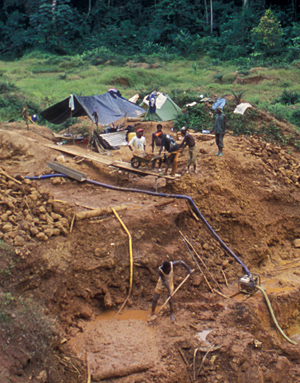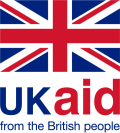You are here

Share
Attachments
Download
Artisanal and Small Scale Mining: A Summary (PDF- 24 pages May 2013)
ASM-PACE Global Solutions Study
Liberia Case Study (June 2012)
ASM-PACE Methodological Toolkit (June 2012)
Field Notes: Green gold for Gabon (Nov. 2012)
Record Gold Prices Drive Deforestation in Peruvian Amazon
Authors/Partners
WWF, Fauna and Flora International, and Estelle Levin Ltd, for the World Bank Africa Region.
Impact of Artisanal and Small Scale Mining in Protected Areas
CHALLENGE
Artisanal and small scale mining (ASM) is an important source of income for millions of poor people around the world. The past decade has seen increasing numbers of individuals and households turn to ASM, and this trend is likely to grow in the face of high mineral prices, population growth, poverty and climate change. Because ASM activities contribute to poverty reduction in remote rural areas, efforts to simply eradicate the activity tend to fail.
However ASM tends to destroy and degrade forest ecosystems (through habitat destruction, the use of toxic chemicals, pollution of waterways, etc) and threatens the practices on which mining populations depend (for example, gathering firewood, bushmeat hunting, timbering for construction, etc). It is also a growing driver for internal migration and colonization of frontier forest lands that may lead to permanent land clearance.
APPROACH
With PROFOR support, the World Bank's Africa regional staff contracted WWF and Estelle Levin Ltd to conduct studies in Liberia and Gabon to analyze the impacts of artisanal mining activities on high-value natural landscapes and the people who live nearby. Drawing lessons from the assessment of two national parks (Ndangui in Gabon and Sapo National Park in Liberia) and existing literature on succesful park management, the case studies, the global solutions study and the methodolgical toolkit offer recommendations on how to reconcile socio-economic development based on artisanal mining and preservation of important ecological sites.
MAIN FINDINGS
The study looked at 36 countries and found that artisanal and small scale mining was taking place either inside or along the borders of 96 out of 147 protected areas in those countries. In the end, the project looked in more depth at experiences in three countries: Liberia, Gabon and Madagascar (case study is forthcoming) -- see videoclip for findings.
It concluded that military efforts to permanently remove illegal miners from protected areas were not sustainable in the long run (particularly if a source of minerals is well known), and that other solutions could help breach a compromise between conservation goals and mining activities:
- For example, there are potential opportunities to develop sustainable mining through a sustainable supply chain approach, notably in Gabon where miners do not use mercury to extract gold.
- Short of eviction, co-existence and degazetting parts of protected areas are also options that allow negotiated access to mineral resources.
- Although replacing artisanal and small scale mining with large-scale operations may be attractive from a government regulation point of view, they do not offer the same number of jobs that smaller operations do.
The Methodological Toolkit has been designed to help users:
1.Rapidly assess and map environmental, social and economic impacts of Artisanal and Small-scale Mining,with a particular focus on protected areas, critical ecosystems and vulnerable groups.
2.Identify potential solutions and alternative approaches through assessment of past efforts (both successes and failures) to address the identified short- and long-term environmental impacts.
3.Identify and develop measures that can produce concrete improvements in critical ecosystems through sustainable solutions that reduce the environmental and social damage caused by ASM, while building on its economic, social, and empowerment potential.
For stories and updates on related activities, follow us on twitter and facebook, or subscribe to our mailing list for regular updates.
Author : WWF, Fauna and Flora International, and Estelle Levin Ltd, for the World Bank
Africa Region.
Last Updated : 02-07-2017








